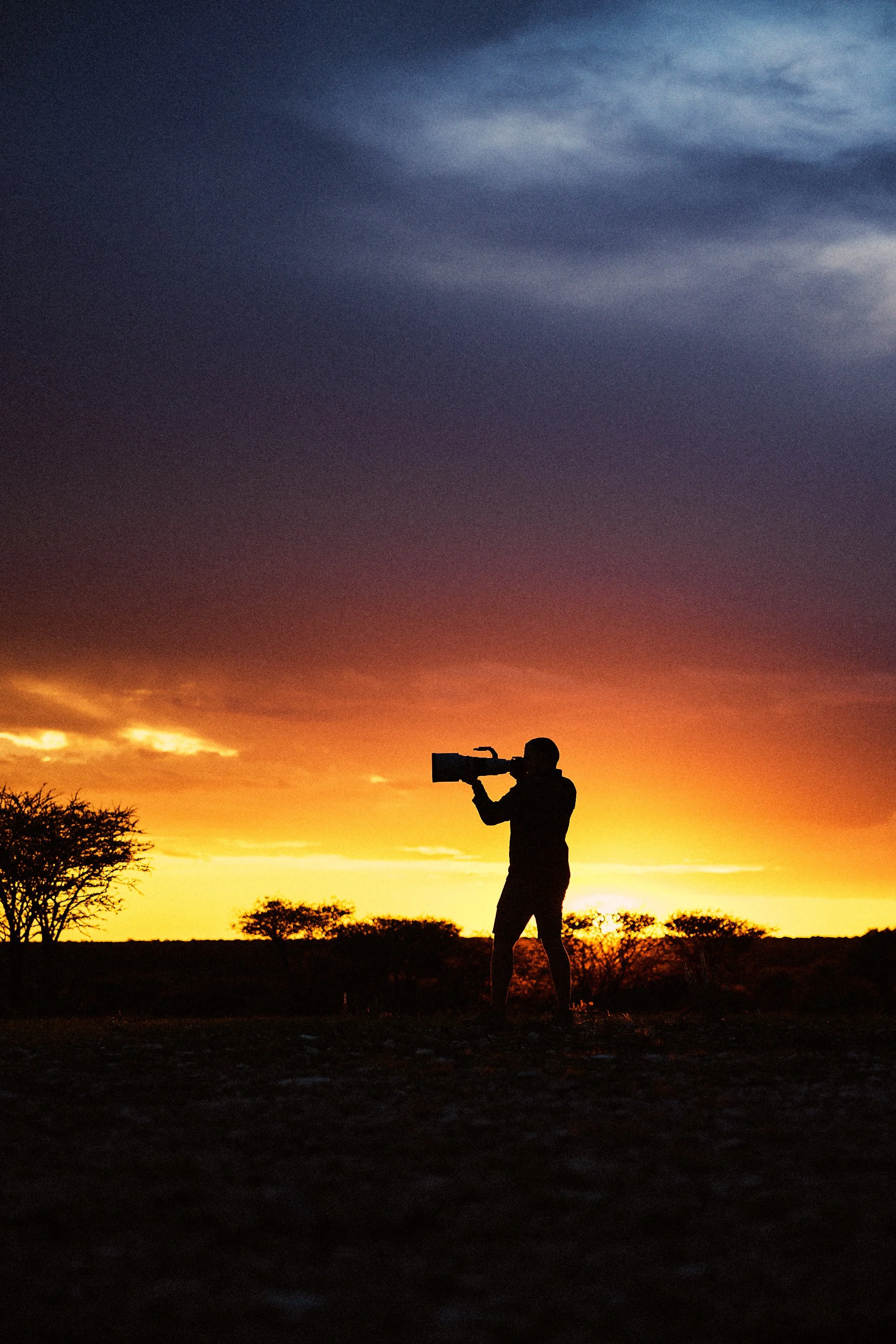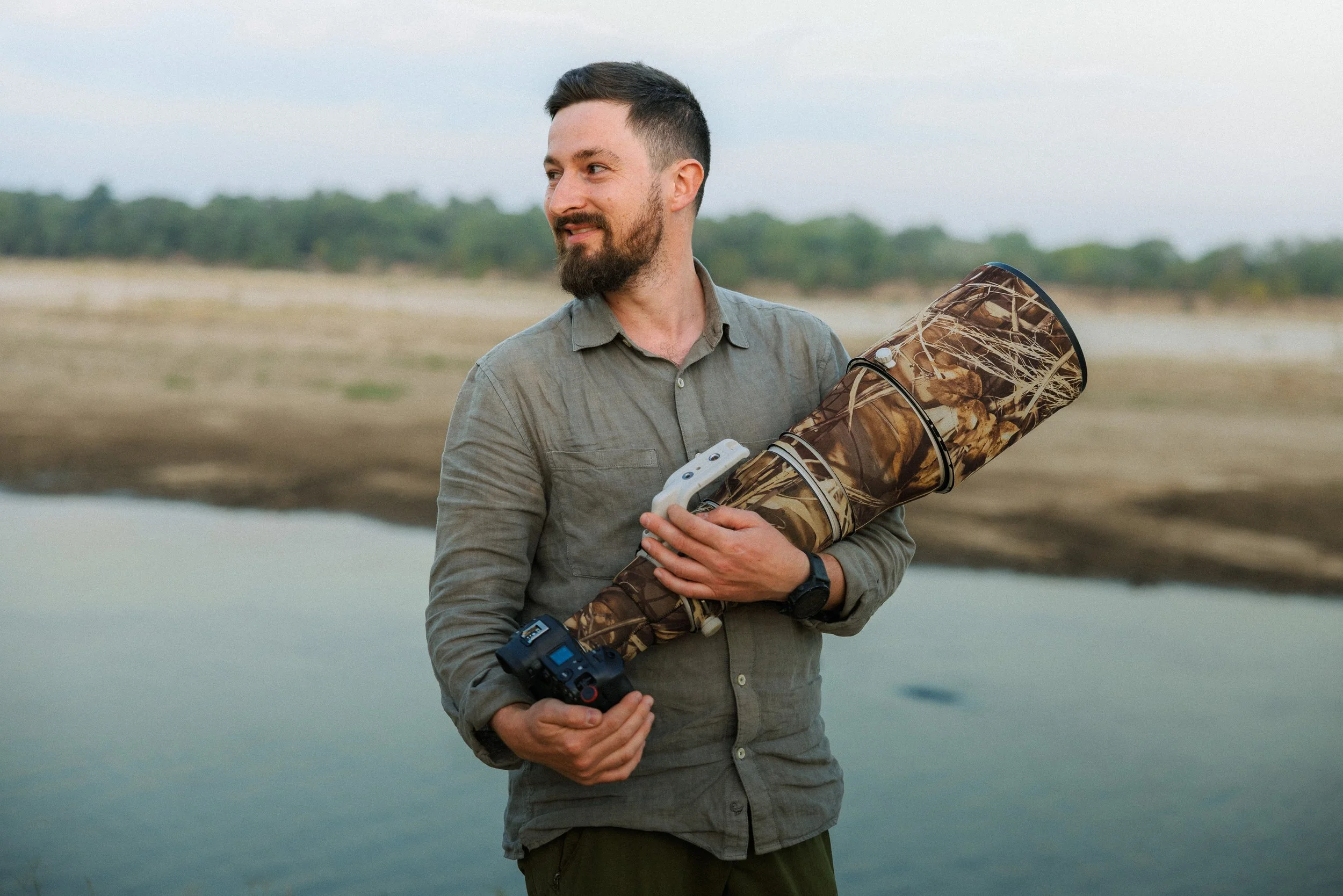The Beauty of Coming Home Empty-Handed: Lessons from the Central Kalahari
When I planned this trip to the Central Kalahari Game Reserve, I had visions of drama - lions pacing across golden pans, leopards resting in acacia shade, and cheetahs sprinting after springbok. I’d read the trip reports, studied the sightings maps. Everyone seemed to say the same thing: at the very end of the green season water is scarce out there and the big cats stick close to the few remaining pans.
Well, that’s not how it played out.
Wildebeest herd at sunrise near Passarge Junction
Expectations vs. Reality
We entered from Tsau Gate, full tanks, full fridges, full of hope. The bush looked lush - too lush, in fact. It had rained heavily this year and what was supposed to be the dry heart of Botswana looked more like the Serengeti. Water pooled in unexpected places. The pans were teeming with grass. And with so much spread-out water, the wildlife was just as spread out.
We heard lions roaring every night. Deep roars that vibrated through the canvas tent walls and sent chills down my spine. But seeing them? Not once. I glassed every ridge and drove every loop we had mapped. I saw thousands of springbok, oryx, wildebeest, and birds… but no predators.
No lions. No leopard tracks. Not a glimpse of a cheetah tail flicking in the distance.
Phokoje Pan
The Silence of the Wild
Still, I wouldn’t call it a disappointment. There’s something oddly powerful about not getting what you came for. When nature doesn’t put on the show you expected, you start to notice the show that’s in front of you. The silence became a kind of soundtrack. I found myself just sitting for hours at the edge of the pans watching herds graze in peace, listening to wind and doves and the crunch of hooves on dry grass. I’d climb on the Hilux’s roof at sunset, sip tea, and just…be there. In the Central Kalahari, you’re tens of kilometers from the nearest village. No planes. No power lines. Just dust, open sky, and silence.
Setting up camp at Passarge 3.
Springbok herds were amongst the largest I’ve seen. Here at sunrise in Piper Pan.
📗 Want to improve your field skills before your next trip?
Download my free eBook
Patience, Observation, and Stillness
One afternoon at Piper Pan I spent nearly three hours with the biggest herd of springbok I’ve ever seen. The light was soft, the breeze cool. I took maybe ten photos, but I studied their behavior more than anything. One would flick its ear, and the others would react. A small dust devil sent them shifting nervously. A black-backed jackal trotted past and was ignored. I felt like an intruder in their world.
Springbok herd in Piper Pan.
The more time I spent still, the more I noticed how everything connects. The oxpeckers on the giraffes backs. The way ground squirrels would freeze when bateleurs flew overhead. Even the ants seemed busy with purpose.
Minimal Landscapes, Maximum Emotion
Photographically, this trip pushed me hard. Without big cats to chase, I turned to the landscape. But CKGR isn’t dramatic like the Okavango or the Namib dunes. It’s flat. Monotone. Challenging. And that’s exactly why it was such a good teacher.
A shy brown hyena spotted around Tau Pan, the only predator I could find (besides a high number of black-backed jackals).
No dubt, oryx is the most iconic animal out in the Kalahari.
I learned to simplify compositions. To embrace minimalism. I shot wide and low, using termite mounds and lonely trees as subjects. I used the deep greens from the rainy season grass against the pale browns of the road tracks to build contrast. Every sunset became a canvas. I’d wait for clouds to catch fire, then use the silhouettes of animals or the horizon line to anchor my frames. I started seeing beauty in the empty space.
Piper Pan.
The Takeaway
The Central Kalahari didn’t give me the photos I expected. But it gave me something better. It gave me time to reflect. To observe. To appreciate the rhythm of a wild place where humans have no real say. Where things happen, or don’t, on their own schedule.
If you’re chasing “bangers”, CKGR might frustrate you. But if you’re open to learning, to slowing down, and to letting the place work on you, then it might just be the most rewarding park you’ve ever driven.
Will I go back? Sure I will. In a different season, or in a different year. Wildlife photography doesn’t happen at our pace - it’s nature that rules there.



















